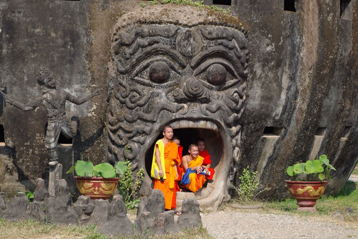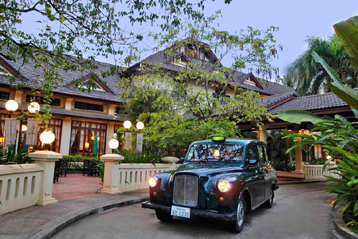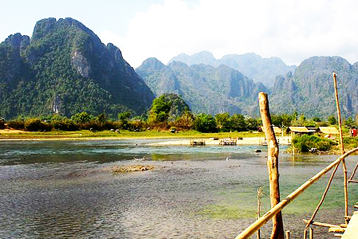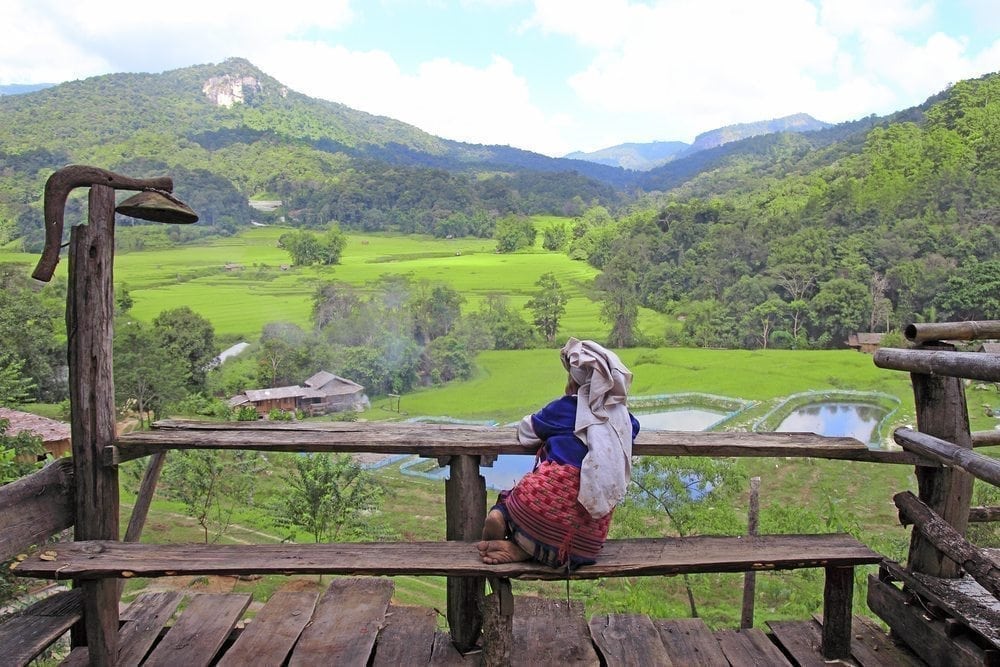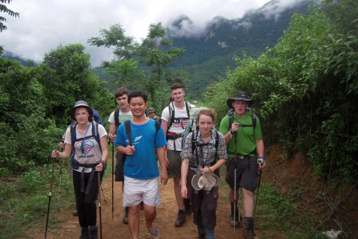Ethnic Groups
Laos is often described as less a nation state than a conglomeration of tribes and languages. And depending on who you talk with, that conglomeration consists of between 49 and 134 different ethnic groups. (The lower figure ii that now used by the government).
While the tribal groups are many and varied, the Lao traditionally divide themselves into four categories – Lao Lum, Lao Thai, Lao Thoeng and Lao Soung. These classifications loosely reflect the altitudes at which the groups live, and, by implication (not always accurate), their cultural proclivities. To address some of these inaccuracies, the Lao government recently reclassified ethnic groups into three major language families – Austro-Tai, Austro- Asiatic and Sino-Tibetan.
However, many people you meet won’t know which language family they come from, so we’ll stick here with the more commonly understood breakdown.
About half the population are ethnic Lao or Lao Loum, and these are clearly the most dominant group. Of the rest, 10% to 20% are tribal Tai, 20% to 30% are Lao Thoeng (‘Upland Lao’ or lower-mountain dwellers, mostly of proto-Malay or Mon-Khmer descent) and 10% to 20% are Lao Soung (‘Highland Lao’, mainly Hmong or Mien tribes who live higher up).
The Lao government has an alternative three-way split, in which the Lao Thai are condensed into the Lao Loum group. This triumvirate is represented on the back of every 1000 kip bill, in national costume, from left to right: Lao Soung, Lao Loum and Lao Thoeng.
Small Tibeto-Burman hill-tribe groups in Laos include the Lisu, Lahu, Lolo, Akha and Phu Noi. They are sometimes classified as Lao Thoeng, but like the Lao Soung they live in the mountains of northern Laos.
Lao Loum
The dominant ethnic group is the Lao Loum (Lowland Lao), who through superior numbers and living conditions – in the fertile plains of the Mekong River valley or lower tributaries of the Mekong – have for centuries dominated the smaller ethnic groups living in Laos. Their language is the national language; their religion, Buddhism, is the national religion; and many of their customs – including the eating of sticky rice and the bfasii ceremony – are interpreted as those of the Lao nation, even though they play no part in the lives of many other ethnic groups.
Lao Loum culture has traditionally consisted of a sedentary, subsistence lifestyle based on wet-rice cultivation. They live in raised homes and, like all Austro-Thais, are Theravada Buddhists who retain strong elements of animist spirit worship.
The distinction between ‘Lao’ and ‘Thai’ is a rather recent historical phenomenon, especially considering that 80% of all those who speak a language recognised as ‘Lao’ reside in northeastern Thailand. Even Lao living in Laos refer idiomatically to different Lao Loum groups as ‘Thai’ for example, Thai Luang Phabang (Lao from Luang Prabang). See also Lifestyle.
LaoThai
Although they’re closely related to the Lao, these Thai subgroups have resisted absorption into mainstream Lao culture and tend to subdivide themselves according to smaller tribal distinctions. Like the Lao Loum they live along river valleys, but the Lao Thai have chosen to reside in upland valleys rather than in the lowlands of the Mekong floodplains.
Depending on their location, they cultivate dry or mountain rice as well as wet, or irrigated, rice. The Lao Thai also mix Theravada Buddhism and animism,. but tend to place more importance on spirit worship than do the Loum.
Generally speaking, the various Lao Thai groups are distinguished from one another by the predominant colour of their clothing, or by general area of habitation ; for example, Thai Dam (Black Thai), Thai Khao (White Thai). Thai Pa ( Forest Thai), Thai Neua (Northern Thai) and so on.
LaosThoeng
The Lao Thoeng (Upland Lao) are a loose affiliation of mostly Austro- Asiatic peoples who live on mid-altitude mountain slopes in northern and southern Laos. The largest group is the Khamu, followed by the Htin, Lamet and small numbers of Laven, Katu, Katann, Alak and other Mon-Khmer Min the south. The Lao Thoeng are also known by the pejorative term Which means ‘slave’ or ‘servant’. This is because they were used as indentured labour by migrating Austro-Thai peoples in earlier centuries Mitt recently by the Lao monarchy. They still often work as labourers for the Lao Soung.
The Lao Thoeng have a much lower standard of living than any of the three groups described here. Most trade between the Lao Thoeng and other Lao is carried out by barter.
The Htin (also called Lawa) and Khamu languages are closely related, and both groups are thought to have been in Laos long before the arrival of the lowland Lao, tribal Thai or Lao Soung. During the Lao New Year celebrations in Luang Prebang the lowland Lao offer a symbolic tribute to the Khamu as their predecessors and as ‘guardians of the land’.
Lao Soung
The Lao soung (High Lao) include the hill tribes who live at the highest altitudes. Off all the peoples of Laos, they are the most recent immigrants, having come from Myanmar, Tibet and southern China within the last 150 years.
The largest group is the Hmong, also called Miao or Meo, who number more than 300,000 in four main subgroups, the White Hmong, Striped Hmong, Red Hmong and Black Hmong (the colours refer to certain clothing details. They are found in the nine provinces of the north plus Bolikhamsai in central Laos.
The agricultural staples of the Hmong are dry rice and corn raised by slash-and-burn method. They also breed cattle, pigs, water buffalo and chicken, traditionally for barter rather than sale. For years the Hmong’s only cash crop was opium and they grew and manufactured more than any other group in Laos. However, an aggressive eradication programme run by the government (with sunpport from the USA), has eliminated most of the crop. The resulting loss of a tradable commodity has hit many H’mong community very hard. The Hmong are the most numerous in Hua Phan, Xieng Khuang, Luang Prabang and northern Vientiane provinces.
The second-largest group are the Mien (also called Iu Mien, Yao and Man), who live mainly in Luang Nam Tha, Luang Prabang, Bokeo, Udomxai and Phongsali. The Mien, like the Hmong, have traditionally cultivated opium poppies. Replacement crops, including coffee, are taking time to bed in and generate income.
The Mien and Hmong have many ethnic and linguistic similarities, and both groups are predominantly animist. The Hmong are considered more aggressive and warlike than the Mien, however, and as such were perfect CIA-trained special Royal Lao Government forces in the 1960s and early W70s. Large numbers of Hmong-Mien left Laos and fled abroad after 1975.
More guide...
Responsible Travel
Being a responsible eco tour operator is at the heart of what ACTIVETRAVEL ASIA is all about. From the start, we have been committed to offering low-impact tours that benefit traveler and host alike. We work with local communities, businesses and individuals to develop sustainable tourism opportunities that help local economies while minimizing negative environmental and cultural impacts.
Asia Travel News


